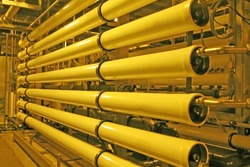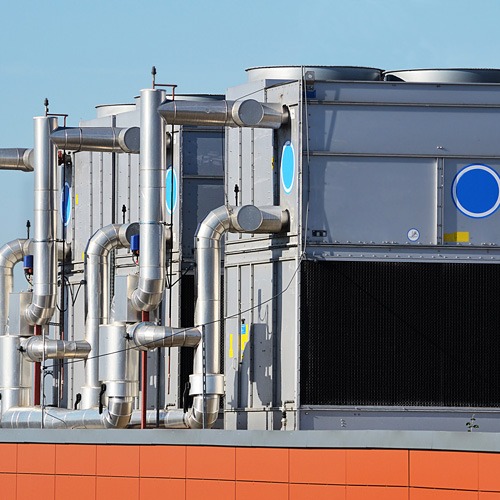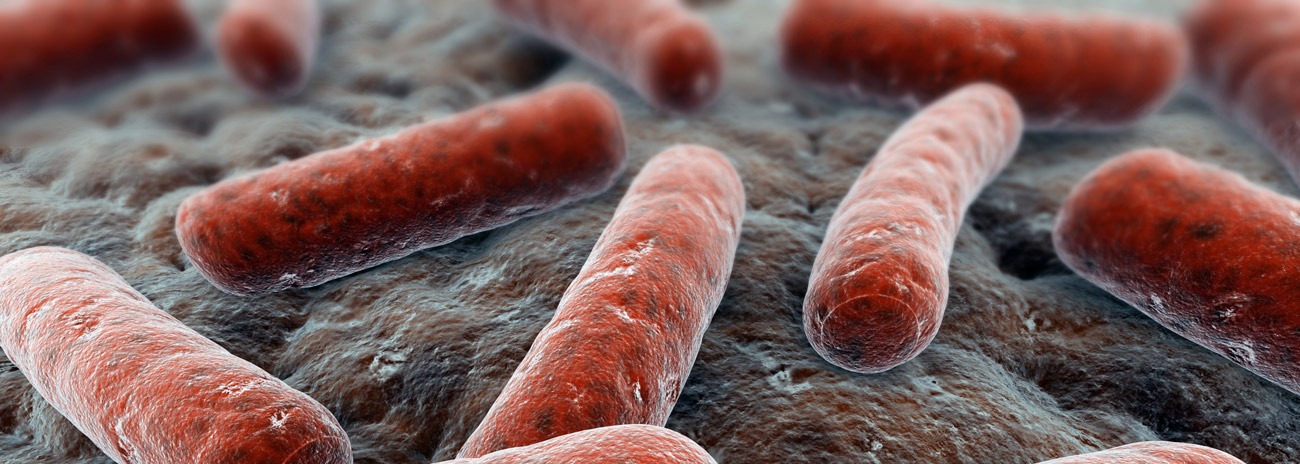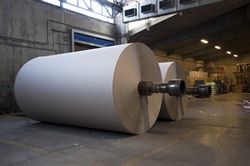Reverse Osmosis (RO) Process Water Treatment
Reverse osmosis will not remove all contaminants from water as dissolved gases such as dissolved oxygen and carbon dioxide not being removed. But reverse osmosis can be very effective at removing other products such as trihalomethanes (THM’s), some pesticides, solvents and other volatile organic compounds (VOC’s).
The reverse osmosis process
In the reverse osmosis process, cellophane-like membranes separate purified water from contaminated water. RO is when a pressure is applied to the concentrated side of the membrane forcing purified water into the dilute side, the rejected impurities from the concentrated side being washed away in the reject water.
RO can also act as an ultra-filter removing particles such as some micro-organisms that may be too large to pass through the pores of the membrane.
RO membranes
Common membrane materials include polyamide thin film composites (TFC), cellulose acetate (CA) and cellulose triacetate (CTA) with the membrane material being spiral wound around a tube, or hollow fibres bundled together.
Hollow fibre membranes have a greater surface area and hence capacity but are more easily blocked than spiral wound membranes.
RO membranes are rated for their ability to reject compounds from contaminated water. A rejection rate (% rejection) is calculated for each specific ion or contaminant as well as for reduction of total dissolved solids (TDS).
TFC membranes have superior strength and durability as well as higher rejection rates than CA/CTA membranes. They also are more resistant to microbial attack, high pH and high TDS. CA/CTA’s have a better ability to tolerate chlorine.
Sulphonated polysulphone membranes (SPS) are chlorine tolerant and can withstand higher pH’s and are best used where the feed water is soft and high pH or where high nitrates are of concern.
Factors affecting system and process performance
The performance of a system depends on factors such as membrane type, flow control, feed water quality, temperature and pressure.
Also only part of the water entering the unit is useable, this is called the % recovery. This is affected by the factors listed above.
For example, the amount of treated water produced can decrease by about 1-2% for every 1 degree Celsius below the optimum temperature.
Systems must be well maintained to ensure good performance with any fouling requiring cleaning maximising the output of water.
Biocides may be needed and the choice of biocide would depend on the membrane type, alternatively, other filters may be required to remove chlorine from water to protect the life of the membranes.
To this end, a good treatment regime is needed and knowledge of the specific foulants so the optimum cleaning and maintenance chemicals can be chosen.
Improving system performance using specialist RO chemicals
The performance of RO membrane systems, water quality and plant performance can be enhanced with the careful selection and application of advanced treatment chemicals designed specifically for such water purification facilities and their sensitive membranes.
Accepta’s range of advanced reverse osmosis chemicals are scientifically formulated to help optimise reverse osmosis recovery rates, improve the operational efficiency of RO plant installations; and reduce problems associated with scaling and corrosion.
For more information on our RO chemical range… reverse osmosis chemicals
Technical support
If you require technical assistance regarding any of the issues raised please feel free to contact our RO specialists on +44 (0) 161 877 2334 or use our technical support form.







